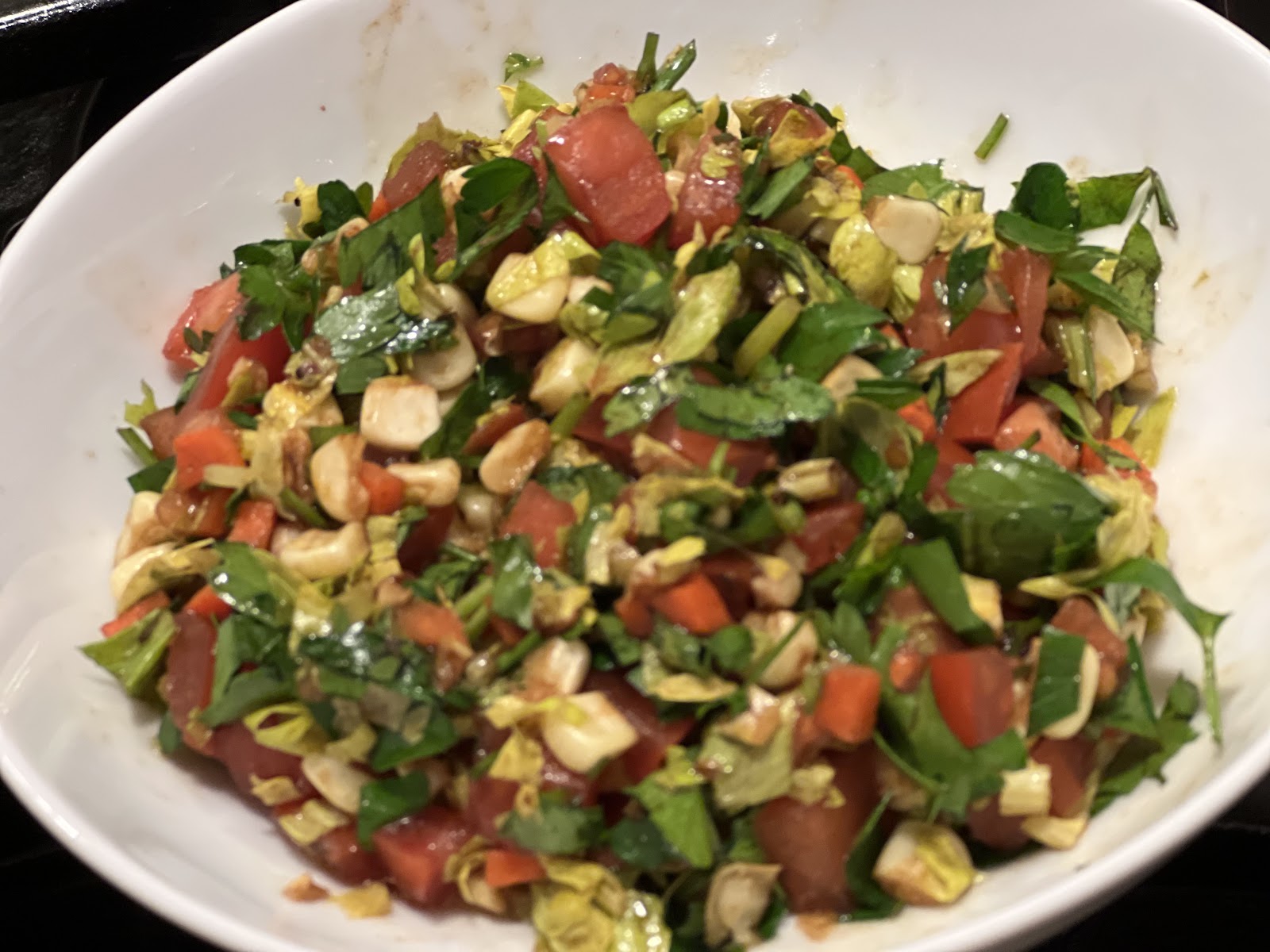When we were packing for the trip, my job was to go through the refrigerator and bring everything with us that would go bad if we left it home:
arugula, apples, parsley, lemons, bacon, eggs, sausages, hot dogs, hamburger meat...all that went into the car.
Way in the back of the refrigerator I found a
Ziploc bag of
lavash I'd bought from an Armenian market,
The Golden Farm, in Glendale three weeks ago. The good news about
lavash is you can eat it freshly baked and weeks later, at least if you grill it.
Fresh
lavash comes in a plastic bag, with 2-4 sheets inside. The sheets of
lavash are huge: 4 feet by 3 feet. Grilled the way I'm talking about, 1 sheet will feed 4 people. Usually a package costs between $1.00-$2.30 in Middle Eastern Markets.
At those prices,
lavash is a bargain.
Grilled
lavash for appetizers:
Drizzle 2 tablespoons of olive oil onto a flat plate. Season with some sea salt and freshly ground black pepper. To prep the
lavash for grilling, cut the sheet into 2" squares and dredge each piece through the seasoned olive oil on both sides. Stack them on top of each other.
Put the heat on "low", then use tongs to place the seasoned pieces of
lavash on the grill. They'll cook quickly, maybe 20 seconds on each side. Cover them with a kitchen towel to keep them warm.
Toppings:
Even though I'm calling this "pizza," I haven't tried tomato paste on
lavash. I think it wouldn't be good because the wet sauce would take away the crispiness, which is what's great about grilled
lavash.
I've stayed with meats, cheeses, and sauteed vegetables.
Cheese:
Any cheese you can grate will work. I've been using cheddar.
Take 1 cup of freshly grated cheddar (white Australian or Irish cheddar is good). After the
lavash has been grilled on both sides, sprinkle a little of the grated cheese on each square and bake in a 350 degree oven for 5 minutes. Finish with a light drizzle of olive oil and serve warm.
Meat:
Thinly sliced, grilled Italian sausage is good, with a sprinkling of finely chopped Italian parsley and/or green onions (the green and white part mixed together).
Freshly sliced prosciutto goes well on top of the grilled
lavash.
Sautéed vegetables:
We used a sautéed, finely chopped mustard green with garlic and shallots. Delicious. Sautéed spinach, broccoli leaves, beet greens--any of those would be great too.
In fact, if you put all of these together on the
lavash it would be delicious. The only thing to keep in mind--the grilled
lavash are fragile, so don't overload it with too many toppings.
Try sautéed tomato slices.
Drizzle olive oil into a hot pan, season with chopped garlic, then gently sauté thin slices of ripe tomatoes. Using two flat, dinner knives, flip the tomato slice over after 1 minute, letting the other side cook for another minute.
What you put on the grilled
lavash pieces is infinitely variable. It's worth trying just about everything and anything.
 This recipe answers the question: what do I do with all those over-ripe bananas?
This recipe answers the question: what do I do with all those over-ripe bananas?




